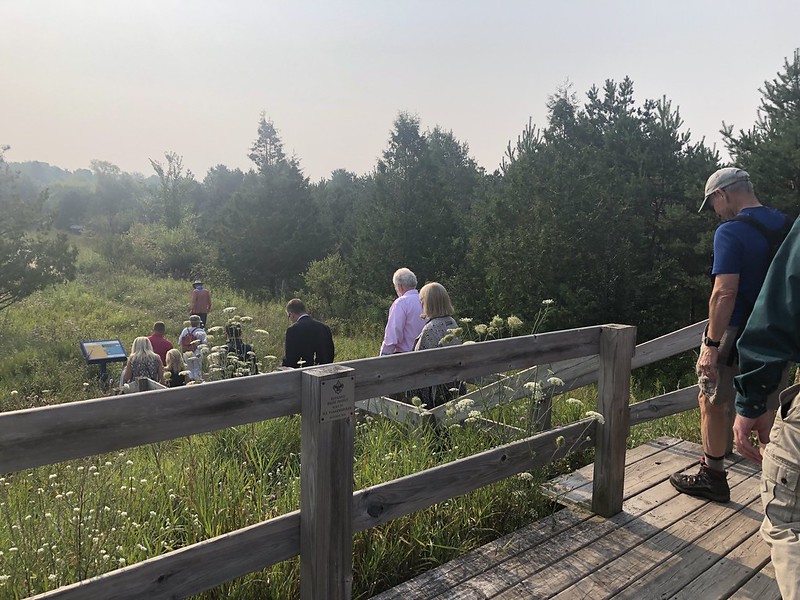Natural Area
Explore 195 acres of wilderness—right on campus.
North Central's Natural Area is 195 acres of relatively wild land adjoining and south of the developed campus in Petoskey. It is bordered by the Bear River to the south (except for about 7.2 acres south of the river), farmland to the east, and woodland to the west. Access is available at the southeast corner of the parking lot near the Student and Community Resource Center.
The landscape itself gives a record of the environmental changes since the last Ice Age: mainly glacial deposits associated with retreating glaciers and remnants of floodplains abandoned by the Bear River as the water levels in Lake Michigan have dropped. A dozen different biotic communities, both upland and wetland, can be found within the boundaries of the Natural Area, making it an excellent place for environmental studies, photography, and wildlife observation.
In August 2021, the 80-foot Iron Belle Bridge opened to the public, connecting North Central's Natural Area to the River Road Sports Complex and providing a link between 4.5 miles of trails in Petoskey and an 8-mile trail system in Bear Creek Township.
You can help preserve the beauty and solitude of the North Central Natural Area for all to enjoy by remembering the following:
- Pets must be leashed, according to Emmet County Ordinance.
- Carry out all that you carry in.
- Use established trails and boardwalks.
- Leave wild plants and animals for others to enjoy.
- Enjoy your visit!
The following activities are not allowed in the North Central Natural Area:
- Camping
- Building Fires
- Driving Motorized Vehicles
- Hunting
- Consuming Alcoholic Beverages
- Swimming
- No Bikes
North Central Michigan College has dedicated this land as a natural area to be utilized by the following:
- Area students, so that they are able to learn more about the natural history of northern Michigan ecosystems and organisms
- Wildlife, so that wild creatures are able to seek a natural place in an increasingly unnatural world
- The community, so that visitors are able to enjoy the beauty and solitude of its forest, fields, streams and wetlands.
Areas of Interest
Find more information posted at the entrance to the Natural Area, including trail maps, interpretive materials, permitted activities, scheduled programs, areas of interest and community activities.
In this harsh, exposed habitat, cedars and cherries struggle to reclaim the land. With sunlight abundant, grasses and wildflowers thrive, attracting insects. Many species of birds and small mammals dine on the ample supply of seeds and bugs. Openings like this are important foraging areas for many animal species.
